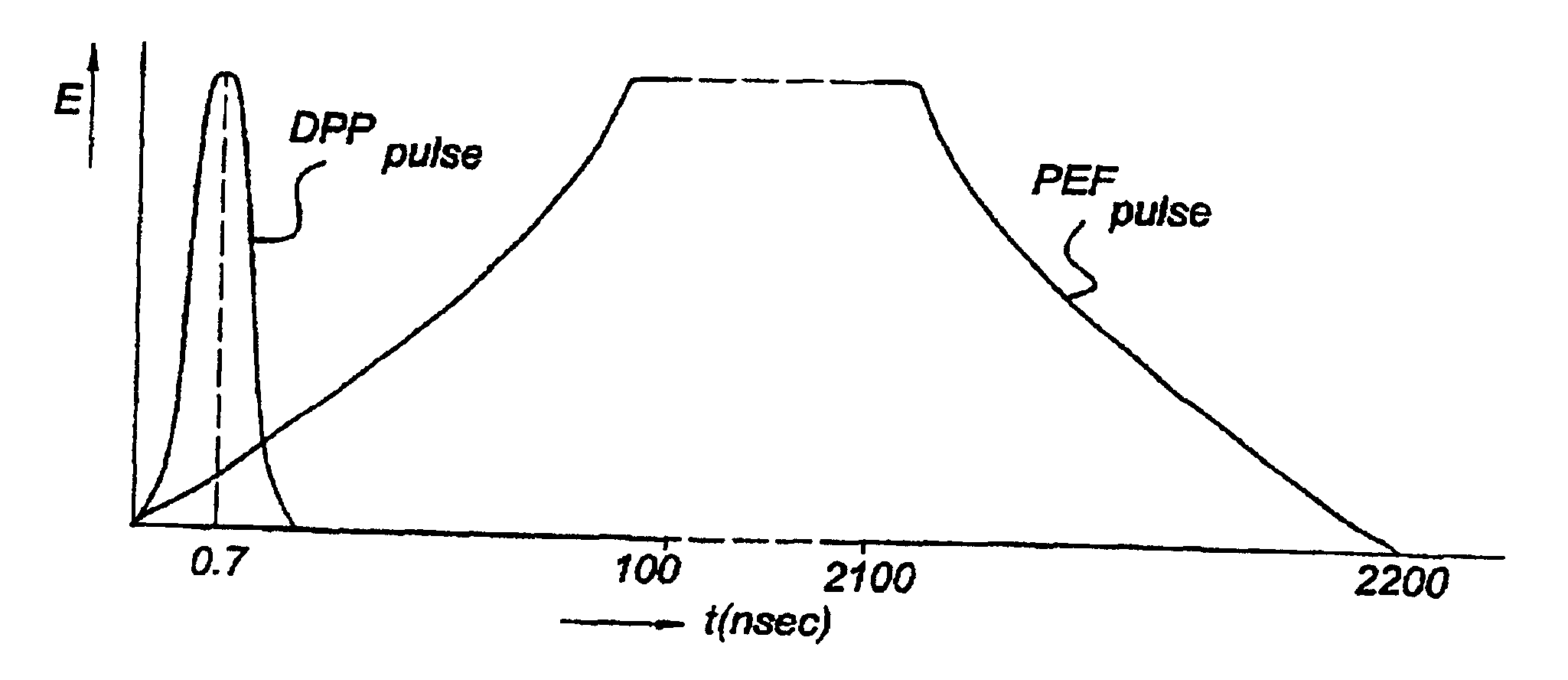Method for treating products by high voltage pulses
a technology of high-voltage pulses and products, which is applied in the field of high-voltage pulse treatment of products, can solve the problems of inactivation of the system, increase of mass exchange, damage to the cell membrane of microorganisms,
- Summary
- Abstract
- Description
- Claims
- Application Information
AI Technical Summary
Benefits of technology
Problems solved by technology
Method used
Image
Examples
Embodiment Construction
The apparatus in FIG. 1a comprises two electrically conducting plates, 10 and 12, which together form a capacitor configuration. Both plates are connected through the respective wires 18 and 20 to an electrical power source 22. Between the plates a packed product 14 is positioned. Typically, the packaging material is made out of electrical insultaing material e.g. plastic, glass or carton which contains the product to be treated.
The apparatus in FIG. 1b comprises two electrically conducting plates, 30 and 32, which configure a capacitor configuration. Both plates are connected through the respective wires 38 and 40 to an electrical power source 42. Between the plates a conduit 34 is installed through which the product is treated in continuous flow. Typically, the conduit is made out of electrical insulating material. This conduit is part of the treatment device.
In FIG. 1a a product is positioned between the plates 10, 12. The product may for instance be transported and loaded in the...
PUM
 Login to View More
Login to View More Abstract
Description
Claims
Application Information
 Login to View More
Login to View More - R&D
- Intellectual Property
- Life Sciences
- Materials
- Tech Scout
- Unparalleled Data Quality
- Higher Quality Content
- 60% Fewer Hallucinations
Browse by: Latest US Patents, China's latest patents, Technical Efficacy Thesaurus, Application Domain, Technology Topic, Popular Technical Reports.
© 2025 PatSnap. All rights reserved.Legal|Privacy policy|Modern Slavery Act Transparency Statement|Sitemap|About US| Contact US: help@patsnap.com


